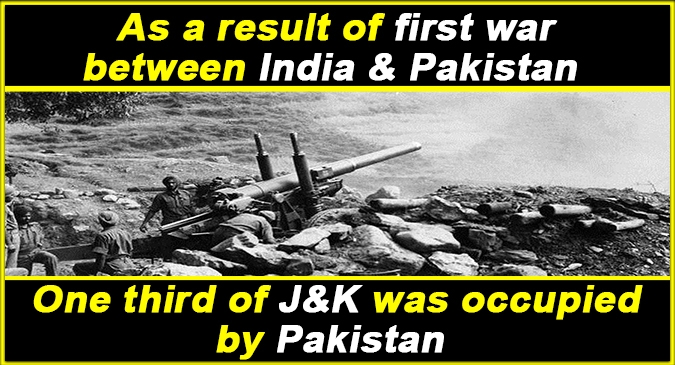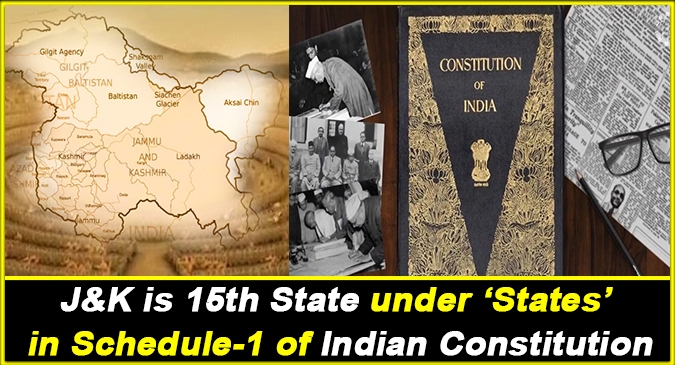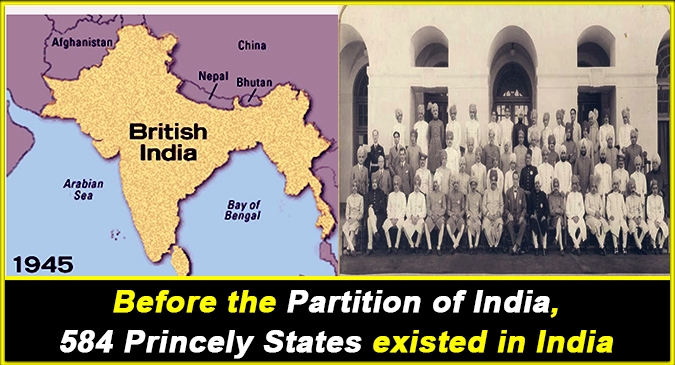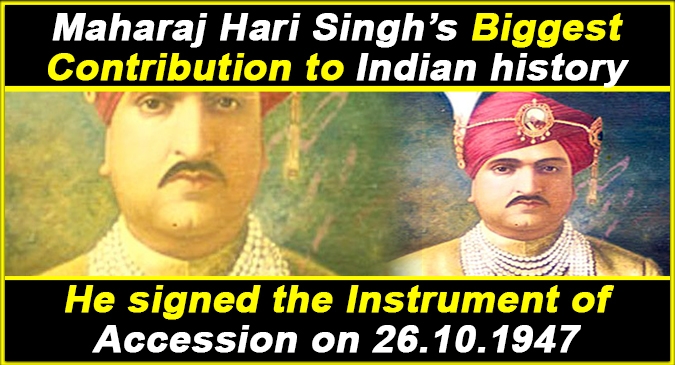In 1947 Maharaja of Jammu & Kashmir was Hari Singh of Dogra Dynasty. His title was Shriman Indar Mahander Rajrajeshwar Maharajahiraj Shri Hari Singh Ji Jammu and Kashmir Naresh Tatha Tibet adi Deshadhipathi Ruler of Jammu and Kashmir
By 15th August 1947 the final boundary line of independent India and new Dominion of Pakistan had not been declared along the West Pakistan side (West Punjab); and the surface links for princely state of Jammu & Kashmir were yet not clear. Radcliffe award was announced after 15th August.
By 15 august, 1947, Jammu and Kashmir had not acceded to either India or Pakistan.
Borders of the Princely of J&K adjoining West Pakistan remained disturbed after 14th August 1947. By the end of third week of October 1947, a force of several thousand armed men (pathans)/ tribal aided and abetted by Pakistan Army regulars openly invaded the then Princely State of Jammu and Kashmir.
On 24th October 1947 Maharaja of J&K requested the Indian government for material and military assistance.
On 26th October 1947 Maharaja signed an unconditional Instrument of Accession with India. The draft of the Instrument of Accession was same as was signed by other acceding Princes of the erstwhile British Indian Empire.
Indian army and air force was moved to Kashmir Valley on 27th October a large part of the Kashmir Valley was cleared of the Pakistani aided and abetted invaders / from Pathans thereafter before ceasefire. But a large area of Jammu & Ladakh Regions and a part of Kashmir Valley still remained under illegal occupation of Pakistan (POJK). Why the areas were not cleared of the enemy occupation even when ceasefire was declared only on 1 January, 1949, still remains a question?

As a result of this first war between India & Pakistan, about one third of J&K was occupied by Pakistan now known as Pakistan-occupied Jammu Kashmir.
Accession of the State was full and final ( Accession of J&K with India Dominion is fully legitimate and valid since it has been executed by the only authority that was nominated under the Indian Independence Act 1947)
Total area of the State of Jk was 2,22,236 sqkms. Today we have only 101387 sqkm area with us. Rest of the area is under illegal occupation of Pakistan and China. ( region wise break up can be provided if required)
Integration of Jammu and Kashmir with India
Article-1 of Constitution of India itself includes J&K as 15th State under ‘States’ in Schedule-1 of Constitution of India.

As per Preamble of (Jammu Kashmir Constitution) –
We, the people of the State of Jammu and Kashmir, having solemnly resolved, in the presence of the accession of this State of India, which took place on 26th day of October, 1947, to further define the existing relationship of the State with the Union of India as an integral part of India as an integral part thereof, and to secure to ourselves:- ……
As per the Preamble of the State Constitution, Accession had taken place on 26th October and the State Constitution has further defined the relationship of the State with the Union.
Section- 3 of J&K Constitution too lays down that J&K is and shall remain integral part of India.( Section-3 JK constitution : Relationship of the State with the Union of India:-The State of Jammu and Kashmir is and shall be an integral part of the Union of India).
In case Article 370 is abrogated, even then Article-1 of Indian Constitution stays, the Constitution of J&K Stays and hence stays Section-3 of J&K Constitution (Relationship of the State with the Union of India:-The State of Jammu and Kashmir is and shall be an integral part of the Union of India).
J&K Assembly cannot amend Section-3 of J&K Constitution as has been clearly laid in Section-147 of J&K Constitution.



